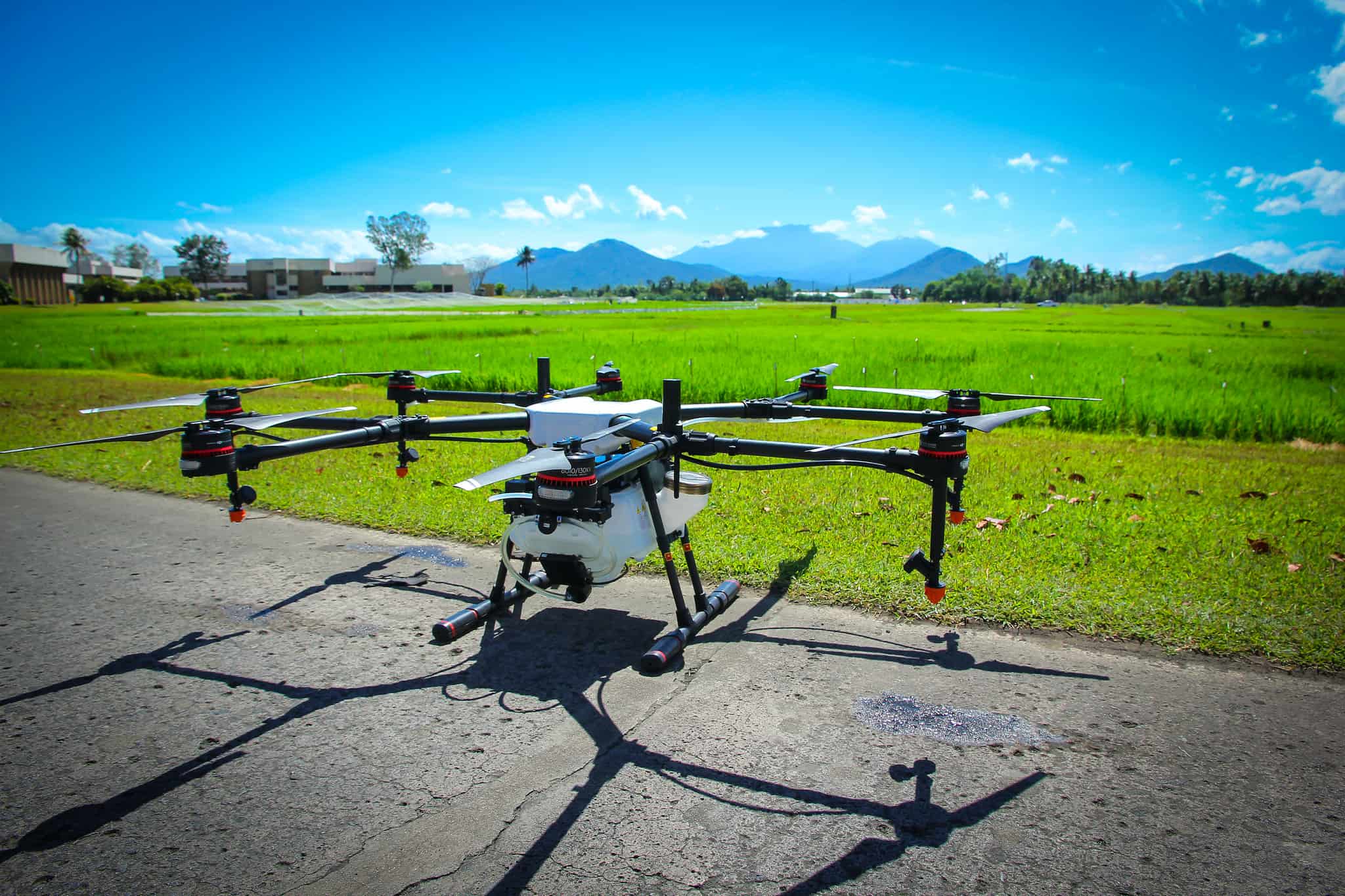Meet Bob. The farmer needing your help to revolutionize agriculture
Farmers are contributing to the huge amounts of information that can be harnessed for global food security solutions. But they need good allies to ensure its full, and ethical, potential is reached.

Photo by IRRI
Bob is a farmer. Bob is modern; he has drones, robots and a shiny tractor helping him to cultivate his field.

Photo by Caique Silva
More than just helping him with day-to-day tasks, these tools generate data. A lot of data.
These data are generally millions of numbers in an Excel table. They can give information about temperature, wind speed, water availability, soil humidity, nutrient content and plant health etc.
But these fast-produced, cheap and huge amount of data don’t make any sense to Bob. What can he do with them?
Big Data, Bob, and friends
The data about plants, climate, and financial market is a great opportunity for Bob to get up-to-date and locally-specific intel about his industry. His farm data is also compared to a database of other neighboring farmers. Thanks to this, he can precisely adjust his field management strategies to lower the cost of production and increase his profit.
For example, Bob knows the nutrition needs of his plants on a day-to-day basis. Therefore he can add the right amount of fertilizer at the right time without overusing it.
When he has data about the commodity market, Bob can sell his crops at the best time to get the highest profit.
The information created from the data makes it easier to take the good decisions, however Bob can’t manage all these data by himself; he needs an external help from experts.
In the past, farming experts included his grandfather and the wise old men in the village, whereas today experts belong to private companies. These companies have infrastructures to store, exchange and analyze a huge amount of data.
The collection and trading of data is a very lucrative activity.
Data brokers such as Acxiom or Experian focus on getting data from all over the world, to curate and distribute them. They ensure the traceability, anonymity, and quality of the data.
Data analysts are coming at the end of this chain. They translate data into recommendations ready to be implemented by farmers.
Data analysis creates new business opportunities and attracts entrepreneurs willing to create consulting agencies to help farmers increase their profit.
FarmGuide in India is one of these agri-tech start-ups.
It is “integrating technology such as machine learning and data analytics to create customized information to cater to farm businesses and growers”.
It helps Indian smallholder farmers make the best decision by giving them information about weather, market opportunities, and new crop seeds.
This information is sent as a pre-scheduled and pre-recorded voice call to the farmer who can take fully informed decisions.
The power asymmetry in Big Data
In the process of getting data, one farmer alone has a negligible role but, together, farmers are crucial. They create the raw data which are then monetized by external companies.
Ideally, farmers should learn and be trained to use Big Data; however, today most farmers from industrial farms are simple franchisers working under the guidance of a firm such as Monsanto. These farmers may develop a dependency for their partner and become more vulnerable.
The corporate company has access to the farmer’s secret, for example, field quality, plant growth and crop yield. Moreover, the farmer doesn’t know how and where his information is kept or used.
Climate Corp, a world leader in the agricultural big data business, recognized the data ownership of farmers. However, it didn’t give any right to them concerning the analytics and information generated from these data.
The expertise and the quantity of data available for these companies give them power.
Since one farmer alone doesn’t have much influence on these firms, farmers organized themselves in cooperative to negotiate their rights.
They are afraid that a third party such as another company or the government gets access to their private information without their knowledge and consent.
Even if farmers have access to new insights about their farm thanks to Big Data, they expose themselves to an existential threat if the data fall in bad hands.
For example, yield data can be used to speculate stocks on the financial commodity market which may decrease incomes and threaten farmers livelihood.
The future needs more than data
Big Data in agriculture has the potential to restructure the economy completely.
More people are aware of the global environmental problem, and many want to solve it.
A change in consumption habits has already occurred. People want healthy food that is fairly and sustainably produced.
With the possibility to scan a QR code with a smartphone and know the way fruit is grown, the consumer will be able to buy environment-friendly products and boycott the companies releasing high negative externalities.
Nonetheless, this huge progress enabled by the Big Data shouldn’t put farmers’ livelihoods at risk. Even if the technology based on Big Data opens new exciting opportunities, we need to be careful.
Social science and ethics have to catch up with technology to create global legislation and protect data providers from power abuse.
Moreover, there is a need to educate farmers about Big Data and train them to take advantage of it safely.
Bob contributes to big data and this has a huge potential for impact; the potential to increase his income as well as to feed and save the world.
To maximize this potential, Bob needs good allies; experts who will give him equal power without exploiting him. Where are these allies? Will you be one?
Thuan Sarzynski
Thuan is a master student in Landscape Ecology at the University of Hohenheim in Germany. He has wide interests in environmental and social issues. His main goal is to reach the Sustainable Development Goal during his lifetime and create a better world for his grandchildren.
Stuttgart, Germany
Blog Competition Entry
This article is published as a part of our publicly open big data blog competition. If you have enjoyed this reading this entry, you can vote by liking, commenting or sharing.




